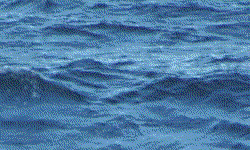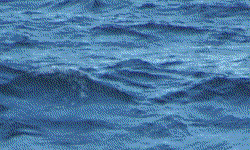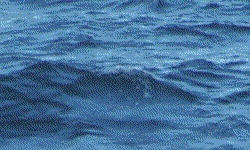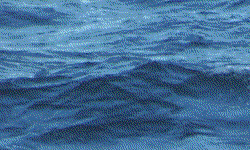
|
|
|
Swell Spanner Designs
The swell spanner type of wave energy converter consists of three floats connected in series. They are usually long and slender, and are arranged parallel to each other to give the machine stability. As swells pass through the span of the floats, the floats rise and fall. With the optimal wave length (see Figure 4), the vertical movement of the end floats is opposite to that of the center float, and performance is maximized. This relative vertical movement of the floats is used to drive a generator. As wave lengths increase, the efficiency declines. Figure 5 shows that the machine tends to rock back-and-forth, rather than flex, when the wave length is double the optimal length. Similarly, as wave lengths decrease, the efficiency also declines. Figure 6 shows that the relative motion of the three floats ceases when the wave length is half the optimal length.
Like sea snake designs, swell spanners are dependant on wave length for their performance. In addition, swell spanners are relatively small units. As such, a farm arrangement would be required to produce any sizeable amounts of energy. Since they are individual units, they each require their own mooring and electrical cables. This mass duplication of materials inordinately increases construction costs. The increased costs also limit placement to shallow and close coastal waters where wave energy is reduced - due to its proximity to land. Due to these factors, they rank very low on the comparative efficiency scale. |



